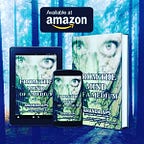Can You Really Rely On Your Eyes And Ears? Pareidolia And White Noise
In my career as a paranormal researcher I’ve seen tens of thousands of photos with people claiming to have captured something paranormal. Same goes with EVPs Electronic Voices phenomenon.
Unfortunately, most times it’s only pareidolia.
As researchers we learn to fine tune our senses to everything we analyse it’s our reputation on the line if we don’t do our job correctly.
Pareidolia can be considered a subcategory of apophenia. Pareidolia is a word that’s used for seeing patterns in random objects which includes, hearing, seeing and experiencing something that actually doesn’t exist in the sense your mind has perceived it. Auditory pareidolia makes us vulnerable to suggestion.
Another word used in paranormal circles is matrixing, for example: faces in an old abandoned property through the dusty broken windows looks like 20 faces staring at you, trees resembling the devil, the virgin Mary’s face on toast, etc.
It has been classed as a psychological phenomenon involving a vague and random stimulus (often an image or sound) being perceived as significant, when in actual fact it’s our brain processing it in a different form and trying to make reasoning for what we’re experiencing/perceiving to make sense in our mind.
